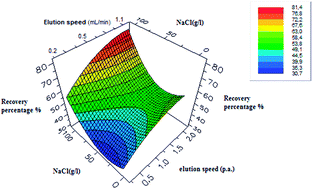An experimental design approach to the optimisation of pesticide extraction from water
Abstract
In the last few decades, pesticides have been used increasingly throughout the world. Nowadays, contamination of aquatic systems by pesticides has become a global problem. Due to their stability, mobility and long-term effects on living organisms, pesticides are among the most dangerous pollutants that can be monitored in the environment, and the determination of accurate contamination levels also constitutes a crucial step in environmental research. However, in the case of quantitative analyses, extraction of targeted analytes can turn out to be difficult since these compounds are often present below the detection limits. Consequently, the accuracy of environmental analyses mainly depends on the efficiency and the robustness of the extraction–preconcentration step. In this work, a solid-phase extraction (SPE) procedure using hydrophilic modified styrene-based polymer (HLB) cartridges was optimized for the extraction of organonitrogen and organochlorine pesticides from water. An experimental design was carried out for modeling SPE optimal extraction conditions of thirty four pesticides. The five parameters studied were the flow rate, pH, elution speed, ionic strength of the sample and the nature of the eluting solvent. Extracts were analyzed using gas chromatography equipped with a mass spectrometer (GC-MS). The optimal extraction conditions selected for the flow rate, pH, elution speed, ionic strength and the nature of the eluting solvent were respectively 2–4 mL min−1, pH = 6, 0.5 mL min−1, 100 g L−1 of NaCl and ethyl acetate–methanol (1/1 v/v). The analytical procedure was validated for fifteen pesticides, which include thirteen organonitrogens and two organochlorines.


 Please wait while we load your content...
Please wait while we load your content...